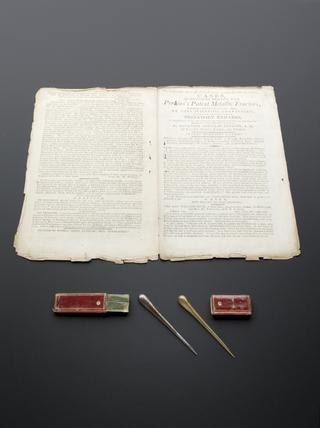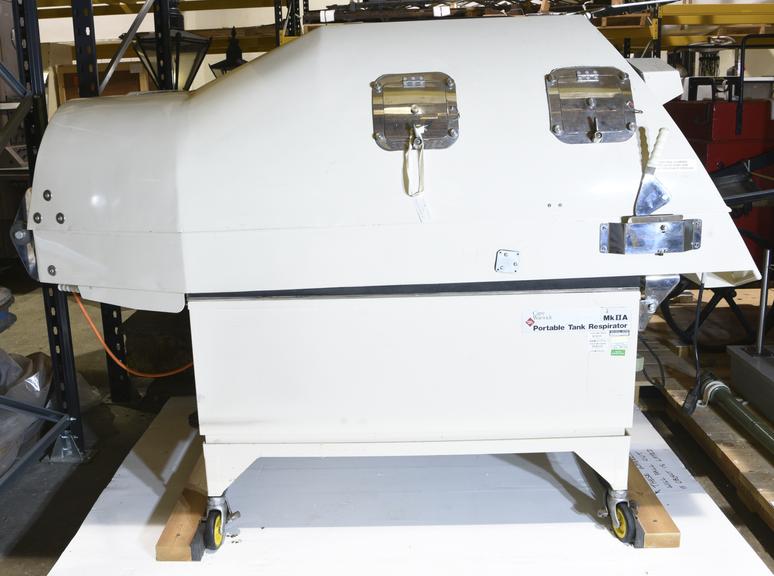
Portable Negative Pressure Respirator
- Made:
- 1986 in United Kingdom

Adult sized negative pressure respirator, Portable Tank Respirator, MK IIA made by Cape Warwick, with in built pump, 1986 developed by Dr Geoffrey Tallent Spencer and designed by John Wines, used at the Assisted Ventilation Unit at Newmarket General Hospital until 1992 and later at the Respiratory Support and Sleep Centre (RSSC) at Papworth Hospital until the 2000s.
Lying inside the tank respirator for a few hours at a time or overnight, people used this respirator to help them breathe. With a tight seal at their neck to prevent air escaping, the in-built pump in its base creates negative pressure inside the tank. This changing pressure helps a person’s chest expand and deflate, taking over the muscles that control their breathing.
Developed in conjunction with Geoffrey Tallent Spencer (1926-2018) to make a more portable design, this model was the last product of Cape Warwick, formely known as Cape Engineering. The company had a long history of making different models of negative pressure ventilators, known as iron lungs. Anaesthetist Geoffrey Tallent Spencer was involved in the development of the Phipps unit at Southwestern hospital to help people depending on ventilators to live at home. This design meant for the first time that people could unlock the ventilator from the inside, making it safer and easier to use. Only 25 of these models were ever made – 20 in the mid 1980s and five in 1992.
Details
- Category:
- Therapeutics
- Object Number:
- 2020-191
- Materials:
- plastic and electronic components
- Measurements:
-
overall: 1550 mm x 2210 mm x 864 mm, 220 kg
- type:
- iron lung
- credit:
- Royal Papworth Hospital NHS Foundation Trust


